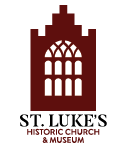Historic St. Luke’s Church’s survival since the 1600s means that it, both as a church and an institution, has shepherded hundreds of early Virginia families through its doors, its catechism, and its legacy. Because of Isle of Wight County’s early existence in the formation of our Nation and colonization of Virginia, it has been crucial to the survival of many early families – families of means and those of pauper status. A look through the intact Vestry Parish Book from Newport Parish of St. Luke’s, which recorded the business dealings for the Parish from 1724-1772, offers a rare glimpse into the colonial church business dealings, such as the cost associated to bury pauper parishioners, names of parishioners who took in indigent children and the sick, and the names of neighbors listed in the Processioners’ Returns which were recorded every four years.[1]
One family found in this record book is the Piland/Pyland Family of Isle of Wight. The Pyland Family’s immigrant ancestor, James Pyland, was baptized at St. Mary Le Port in Bristol, Gloucester, England on 30 August 1604,[2] and arrived in Isle of Wight County, Virginia around 20 June 1642 with his wife, Alexandria – their passage paid by Francis England.[3] James Pyland must have assimilated into the Isle of Wight community quickly, for by 1652, he was elected a House of Burgess Representative for Isle of Wight where he served in 1652.[4] His tenure as a Burgess was not without conflict, however, for he was ejected from his position for his “blasphemous catechism.” He eventually returned as a Burgess in 1659.
His son, Richard Pyland, born approximately 1630, also had rebellious leanings. In 1676, he participated in Bacon’s Rebellion, the infamous organized rebellion lead by Nathaniel Bacon that resulted in the burning of Jamestown. Richard requested and was granted a pardon for his act of rebellion on 15 October 1677.[5]
James Pyland (III), the son of Richard Pyland and Eleanor Moore, and the grandson of James Pyland the Immigrant, held the prestigious position as clerk of the Newport Parish Vestry from at least 3 January 1723/4 until his death in 1728.[6] The Vestry Book provides clues into James Pyland’s life at this time, indicating that he contributed two bottles of wine to the church on 7 June 1722.[7] The Processioners’ Returns, recorded in the Parish Vestry Book on 4 January 1723, indicate that James Pyland lived near the following families: Kea/Kee, Carrell, Williams, Hardin, Brantly, and Chapman.[8]
In James Pyland’s (III) will, written on 20 March 1727/8 and probated on 22 April 1728, he listed his six children and wife by name, leaving behind sundry furniture, a slave named Sam, and a box of doctor instruments, which he left to his son, James Pyland (IV).[9]
His son James Pyland’s (IV) birth was also recorded in the vestry book: “James Pyland [was] son of James Pyland and Eliz. his wife was born 26 July 17?? [illegible].”[10]
The legacy of the ancestory of James Pyland the Immigrant lives on today with an active Pyland Facebook Group with 900 members, all of Pyland descent.[11] Historic St. Luke’s played an important role in the early families of Isle of Wight County, Virginia as is apparent by how many people claim roots at the historic church.
Author Bio:
Written by Kelly McMahon Willette, CG®. Kelly is the 9th great granddaughter of James Pyland, the House of Burgesses Representative for Isle of Wight County, Virginia, and her family has roots in Isle of Wight and Surry County, Virginia. She works remotely for Ancestry.com as their Colonial Virginia Genealogist, and she lives in Norfolk, Virginia, with her two children, two dogs, and two cats. She is a member of the Jamestowne Society, using James Pyland as her Qualifying Ancestor, and Daughters of the American Revolution.
References
[1] Newport Parish (Isle of Wight County, Virginia), Newport Vestry Book, 1724-1772; digital image, “Virginia, Isle of Wight County Records, 1634-1951,” FamilySearch (http://www.familysearch.org), accessed December 2018.
[2] “England Births and Christenings,” FamilySearch (http://www.familysearch.org), Jamys Pyland, baptism 30 August 1604, St. Mary Le Port, Bristol, Gloucester, accessed December 2018.
[3] Virginia, Land Office Patents, Land Office Patents No. 1, 1623-43, pp. 857-8, Francis England land patent, 20 June 1642; digital image, “Land Office Grants,” Library of Virginia (http://lva.virginia.gov), accessed December 2018.
[4] Martha W. McCartney, Jamestown People 10 1800: Landowners, Public Officials, Minorities, and Native Leaders (Baltimore, Maryland: Genealogical Publishing Co., 2012), p. 335.
[5] Newport Vestry Book, 1724-1772, p. 11.
[8] John Bennett Bodie, Seventeenth Century Isle of Wight County, Virginia (Baltimore, Maryland: Genealogical Publishing Co, 1973), p. 161.
[9] Isle of Wight County (Virginia) Clerk of Court’s Office, Will Book 3, 1726-1734, pp. 78-79, will of James Pyland, dated 22 April 1728 probate.
[11] Pyland Facebook group: https://www.facebook.com/groups/1189981881058484/
